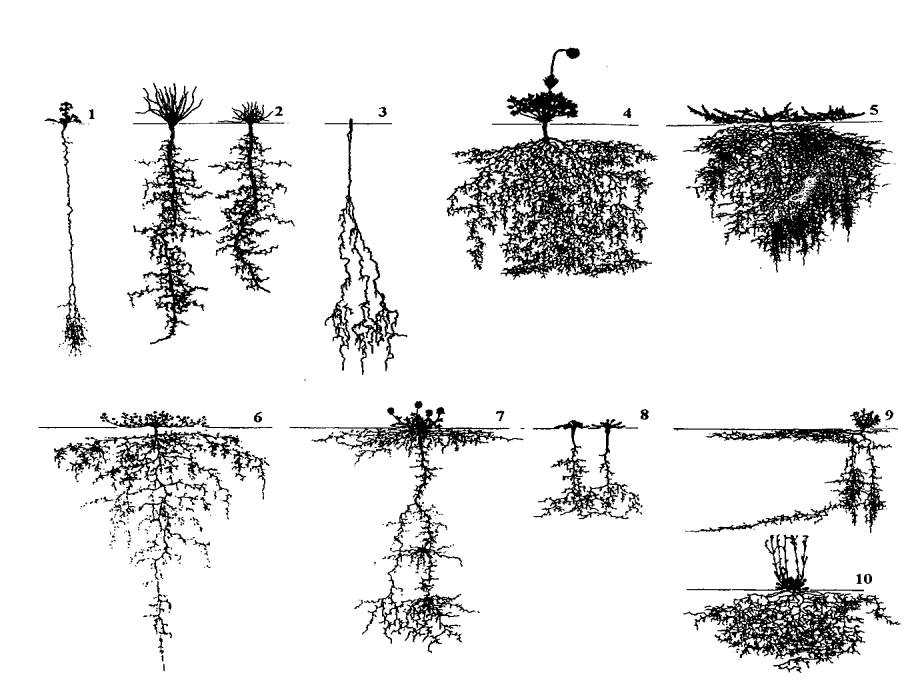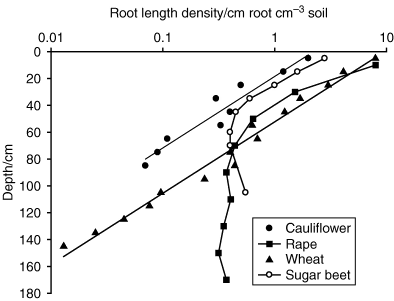October 14, 2020 at 4:22 am | Updated October 14, 2020 at 4:22 am | 6 min read
Crops, Nutrients, Irrigation & Root Analysis
Analysis of the root system is important in ensuring sustainable crop production, reducing nutrient input and irrigation, and protecting soil carbon pools. Getting rapid and frequent images of what is happening underground can help people make timely decisions about agricultural practices to maintain plant health and ensure the judicious use of resources. Root analysis can reduce financial and resource investments to make farming more profitable and environmentally friendly.
The Importance of Root Analysis
Root analysis is important not only to improve and increase food production but also for environment protection and fighting climate change.
- Roots are responsible for the discovery and efficient use of water and nutrients. The importance of roots to plants can be assumed due to the fact that around half of the food produced by a plant is spent on the roots. How efficiently roots use water and nutrients determine the productivity of a plant or crop.
- There are environmental concerns due to pollution caused by the runoff of unused fertilizers, which causes the eutrophication of aquatic systems. The overuse of water through irrigation and the resultant depletion of groundwater and surface water reserves also make farming unsustainable.
- Roots are important in the natural ecosystem, as they are a major carbon pool, and therefore, they are increasingly being studied in all natural ecosystems.
In order to perform all their tasks, root systems have developed different morphology, topology, distribution, and architecture. Each root system is adapted for its longevity, region, and soil type.
Subscribe to the CID Bio-Science Weekly article series.
By submitting this form, you are consenting to receive marketing emails from: . You can revoke your consent to receive emails at any time by using the SafeUnsubscribe® link, found at the bottom of every email. Emails are serviced by Constant Contact

Figure 1. Different root architecture in European dicots, from Kutschera and Lichtenegger (1992), and Lynch (1995)
1- Fryngium campestre; 2- Scorzonera. villosa; 3- Chondrilla juncea; 4- Pulsatilla pratensis; 5- Genista germanica; 6 -Trigonella balansae; 7-Trifolium trichocephalum; 8- Carum caucasicum; 9- Onosma arenarium; 1O- Silene otites.
Disciplines and Industries Using Root Analysis
The main disciplines using root analysis are concerned in some way with crop production, silviculture, and ecology. They are:
Agronomy: Root analysis helps in reducing abiotic and biotic stress in order to increase crop production. Anaylsis includes monitoring roots for efficient use of water and nutrients, plant health, and symbiosis. Root analysis is important for growers as well as agronomists.
Soil Science: The activity of roots influence soil, just as soil affects roots. Roots’ presence, respiration, activity, and exudates all create soil-root interactions that have been getting more attention from scientists in the past three decades.
Ecophysiology: Root ecophysiology, the study of internal and external factors on roots, is another area that has been getting the attention of scientists as of late. The functional, molecular, and physiological mechanisms of root systems and interactions with microbes and other roots are some of the new areas of interest.
Climatology: More carbon is added to the soil by roots than by litter deposition of the shoot system. Moreover, this carbon is likely to remain longer in the soil than the organic matter formed by shoot deposits. Root carbon is now recognised as a major carbon pool that needs to be protected and built up to fight climate change. So, root analysis is very important for scientists, international organisations, national governments, and local groups involved in climate change mitigation and adaptation.
Hydrology: Scientists are following the relationship of root depth with soil water availability in natural systems. Root architecture depends on hydrology and will differ in places with drought compared to plants growing in wetlands, for example.
Uses of Root Analysis
It is difficult to see how roots fare and function underground. By the time symptoms are visible above-ground, it may be too late to fix the problem. Root imaging provides an excellent solution to this problem.
Roots face several challenges in their search for resources:
- The texture of the soil is not even and can vary within a small area.
- There is an uneven distribution of nutrients and water in a given space. Nutrients are more often found in the shallow layers, while there is more water in the deeper layers of the soil.
- There are seasonal fluctuations in soil water content. The amount of water will vary even in farms with irrigation systems, as water percolates quickly down and drains nutrients with it.
- There are many parasites, pests, and pathogens which can attack roots and ultimately affect the whole plant.
Agriculturists use root analysis to get images of:
- The development and function of a plant over time, including new growth, depth, and branching of roots, and symbiotic mycorrhizal-root tip interactions;
- Rooting of crops during the growing phase, specifically, the radius of branching and inter-root distance;
- The incidence of pests and diseases from nematode, parasites, fungi, or dieback diseases; and
- Root responses to fertilizers and the application of irrigation.

Figure 2: Distribution of root density for different maturing crops, from Gregory 2006
Root Analysis Methods
In the past, the methods used to get a picture of the root system involved destructive methods such as coring or trenching. These techniques have the added disadvantage of being one-time observations. Current methods involve making 2D and 3D images of the roots systems, which are non-destructive, and can, therefore, take repeated pictures at the same spot. Root imaging can be done in real time, and as often as necessary depending on the objectives of the study.
Some of the common techniques that can be used in the field in situ are:
- RootReader: A custom-designed software and imaging technique that can make 2D or 3D images that are suitable for phenotyping roots to study their traits;
- Magnetic Resonance Imaging (MRI): An imaging and software system that allows 3D images that measures root mass, length, tip, diameter, and growth angles;
- X-Ray Computed Tomography: This method provides 3D images and is effective in visualizing root growth and root-to-root interactions;
- Neutron Radiography: This method provides a strong contrast between the soil and roots to give good 2D images. It shows not only roots but also water distribution in soil; and
- Minirhizotrons: Involve using a camera-based system to take 2D images of roots by inserting them in a transparent tube installed in the ground, so root growth can be tracked through the growing period. Root phenology, distribution, parasite or pathogen attack, and root-hyphae interactions can also be detected using this technique.
CID Bio-Science offers the CI-600 In-Situ Root Imager and CI-602 Narrow Gauge Root Imager, which are examples of the minirhizotron system. They provide high resolution digital images that track the development and functionality of the roots down to a depth of two meters.
- The CI-600 can give information on root length, area, volume, diameter, and branching angle. Other aspects covered are root distribution and interaction among crop plants.
- The CI-602 can also provide images about root length, area, volume, diameter, and branching angle. It can also detect parasites, nematode and pathogen attacks, and root hyphae interactions. It is suitable for use in all seasons and treatments.
- The software CI-690 RootSnap! helps in transferring the images to computers and in analyzing them.
A Relatively New Science
Root analysis through imaging is a relatively new field technique. It was previously used only in laboratories for phenotyping roots and other studies on root systems. Its recent application in the field, especially in crop production – broad acre and orchards – is making agriculture more sustainable. It is suitable for emerging forms of cultivation such as Adaptive Farming and Precision Farming to cut costs and optimize resource use.
—
—
Vijayalaxmi Kinhal
Science Writer, CID Bio-Science
Ph.D. Ecology and Environmental Science, B.Sc Agriculture
Sources
Bucksch, A., Burridge, J., York, L.M., Das, A., Nord, E., Weitz, J.S., & Lynch, J.P. (2014). Image-Based High-Throughput Field Phenotyping of Crop Roots. Plant Physiology 166 (2) 470-486.doi: 10.1104/pp.114.243519
Ecophysiology of root systems-environment interactions. Retrieved from https://www.frontiersin.org/research-topics/1043/ecophysiology-of-root-systems-environment-interactions
Gregory, P.J. (2006). Roots, rhizosphere and soil: the route to a better understanding of soil science? European Journal of Soil Science 57. https://doi.org/10.1111/j.1365-2389.2005.00778.x
Leitner, D., Felderer, B., Vontobel, P., & Schnepf, A. (2013). Recovering root system traits using image analysis exemplified by two-dimensional neutron radiography images of lupine. Plant Physiology, 164(1) 24–35. doi:10.1104/pp.113.227892
Lynch J. (1995). Root Architecture and Plant Productivity. Plant Physiol. 109: 7-13. Retrieved from https://www.ncbi.nlm.nih.gov/pmc/articles/PMC157559/pdf/1090007.pdf
Malhotra, A., D. Sihi, and C. M. Iversen (2018). The fate of root carbon in soil: data and model gaps, Eos 99. https://doi.org/10.1029/2018EO112593.
Paya, A.M., Silverberg, J.L., Padgett, J., & Bauerle, T.L. (2015). X-ray computed tomography uncovers root–root interactions: quantifying spatial relationships between interacting root systems in three dimensions. Front. Plant Sci. https://doi.org/10.3389/fpls.2015.00274
Rewald, Boris & Ephrath, Jhonathan. (2013). Minirhizotron Techniques. doi: 10.1201/b14500-50
Rutgers University. (2017, September 18). Deep roots in plants driven by soil hydrology. Retrieved from https://phys.org/news/2017-09-deep-roots-driven-soil-hydrology.html
Schulz H., Postma J.A., van Dusschoten D., Scharr H., Behnke S. (2013) Plant Root System Analysis from MRI Images. In: Csurka G., Kraus M., Laramee R.S., Richard P., Braz J. (eds) Computer Vision, Imaging and Computer Graphics. Theory and Application. Communications in Computer and Information Science 359. Springer, Berlin, Heidelberg. https://doi.org/10.1007/978-3-642-38241-3_28
Van Dusschoten, D., Metzner, R., Kochs, J., Postma, J.A., Pflugfelder, D., Bühler, J., Schurr, U., & Jahnke, S. (2016). Quantitative 3D Analysis of Plant Roots Growing in Soil Using Magnetic Resonance Imaging. Plant Physiology 170:1176-1188. doi: 10.1104/pp.15.01388
Related Products
Most Popular Articles
- Transpiration in Plants: Its Importance and Applications
- Leaf Area – How & Why Measuring Leaf Area…
- How to Analyze Photosynthesis in Plants: Methods and Tools
- Plant Respiration: Its Importance and Applications
- The Forest Canopy: Structure, Roles & Measurement
- Stomatal Conductance: Functions, Measurement, and…
- Forest & Plant Canopy Analysis – Tools…
- Root Respiration: Importance and Applications
- The Importance of Leaf Area Index (LAI) in…
- Irrigating with Saline or Seawater






